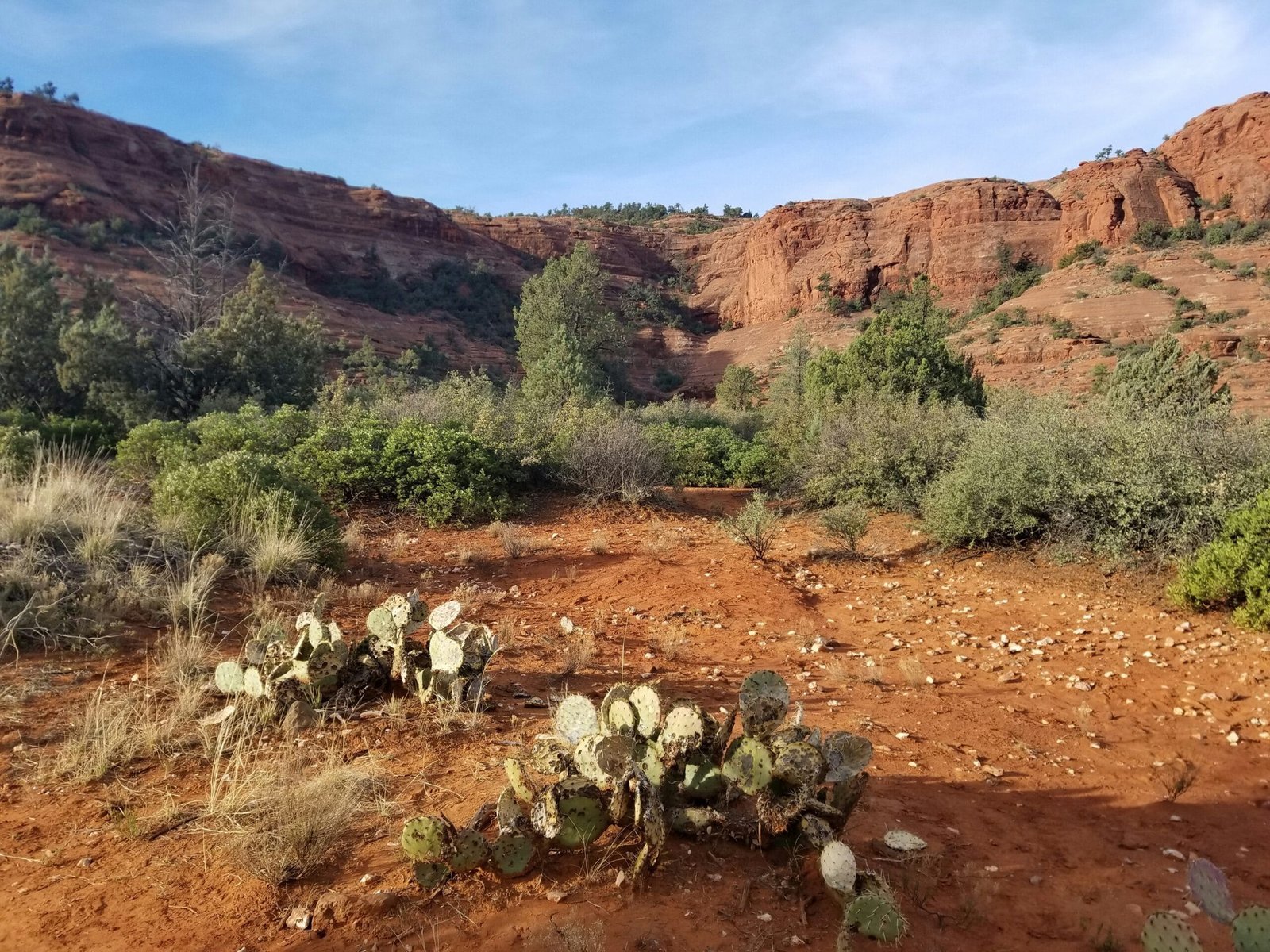How To Control The Growth Of Nopal Cactus?
Have you ever wondered how you can manage the ever-expanding growth of the Nopal cactus in your garden or outdoor space? If you’ve found yourself dealing with this tenacious plant, you’re not alone. The Nopal cactus, also known scientifically as Opuntia, can be a beautiful yet challenging addition to your landscape. Understanding how to control its growth effectively ensures it remains a delightful part of your environment rather than an invasive problem. Let’s delve into the details of how you can manage this hardy plant piece by piece, ensuring your outdoor space remains balanced and thriving.
Understanding the Nopal Cactus
Before diving into methods of controlling its growth, it’s crucial to understand what makes the Nopal cactus unique. Originating from arid regions, this cactus is well-adapted to thrive in dry conditions. Its distinctive paddle-shaped pads and vibrant flowers are not only striking to look at but also serve specific survival functions. By getting to know your plant better, you can make more informed decisions about how to manage it.
The Growth Habits of Nopal
Understanding the growth habits of your cactus is key to controlling its spread. Nopal cacti grow relatively quickly under the right conditions, expanding both vertically and horizontally. They have a propensity to propagate efficiently due to their ability to grow new plants from cuttings of their pads. This makes them resilient but also calls for more meticulous management strategies.
Environmental Preferences
The Nopal cactus thrives in environments that mimic its native habitat — warm, sunny, and well-drained locations. It can tolerate poor soil conditions and minimal water, which contributes to its widespread adaptability. Knowing these preferences allows you to anticipate how and where your cactus might grow next, aiding in more strategic planning.
Why Control is Necessary
The need to control the Nopal cactus might stem from a variety of reasons, ranging from aesthetic preferences to ecological considerations. Unchecked, this plant can overwhelm other vegetation, potentially outcompeting native species and altering local biodiversity. Additionally, its growth can become cumbersome for garden management, making regular upkeep more challenging.
Balancing Your Garden Ecosystem
Maintaining control over your cactus helps ensure that your garden remains a harmonious green space, where all plants have an opportunity to thrive. Nopal cacti, if left unmanaged, can monopolize resources, overshadow smaller plants, and lead to an unbalanced ecosystem. Achieving equilibrium is critical for a healthy and visually pleasing garden.
Preventing Overpopulation
Let’s not forget the practical issues: if your cactus goes unchecked, you may end up with an overpopulated garden that’s difficult to maintain. Frequent trimming and careful monitoring become necessary to prevent a sea of paddles from taking over entirely.

Methods to Control Nopal Cactus Growth
To effectively control the spread of your Nopal cactus, a combination of strategic interventions is often the most successful approach. This includes physical removal, pruning, and sometimes the application of chemical control techniques. Each method has its own set of benefits, costs, and levels of effectiveness.
Regular Pruning
Pruning is probably one of the simplest and most direct ways to keep your cactus in check. By routinely trimming pads at the base, you can maintain a more manageable plant size. Regular pruning not only helps control growth but also encourages a healthier, often more aesthetically pleasing shape.
Physical Removal
In some cases, you may need to remove whole plants. This becomes particularly pertinent if the cactus has grown too large or if you want to decrease its presence significantly. Carefully removing the plant, including its roots, ensures it doesn’t regenerate unexpectedly.
| Step | Description |
|---|---|
| 1. Prepare Tools | Gather gloves, shovels, and pruning shears. |
| 2. Prune First | Cut back the pads to reduce size for easier handling. |
| 3. Dig Around | Loosen the soil around the base to access roots. |
| 4. Remove Cactus | Carefully extract the entire plant, roots and all. |
| 5. Dispose Properly | Ensure pads don’t contact soil to prevent regrowth. |
Chemical Control
For those dealing with particularly unruly Nopal populations, chemical control might be necessary. Herbicides designed for cacti can help manage these instances, though they should be used responsibly to avoid affecting surrounding plants. Always follow product instructions closely to ensure safety and effectiveness.
Preventative Measures
Prevention is always better than cure, especially when dealing with resilient plants like the Nopal cactus. By taking specific preventative measures, you can reduce the likelihood of needing more drastic interventions later.
Barrier Techniques
One way to prevent the unwanted spread is through barrier planting. Using physical barriers around your cactus can contain its growth, keeping it from spreading to unwanted areas. This might include using root barriers made from sturdy materials placed along the perimeter.
Weed Prevention Fabric
Utilizing weed prevention fabric can be another effective measure. By placing the fabric under a layer of mulch or decorative rocks, you can inhibit new plants from taking root, even if pad fragments fall away from the main plant.

Additional Considerations
As you work to control your Nopal cactus, there are a few additional considerations that may help ensure your management efforts are as successful as possible.
Climate and Seasonality
Remember, your cactus is influenced by seasonal changes. Growth typically accelerates during warmer months, making spring and early summer the ideal time to ramp up control measures. Adjust your approach based on the time of year to stay ahead of its growth patterns.
Wildlife Interaction
Your local wildlife might find the Nopal cactus as intriguing as you do. Birds, rabbits, and insects can contribute to its spread by distributing pad segments across your property. Consider ways to limit these interactions to maintain control.
Monitoring Growth
Routine monitoring helps you catch any signs of overgrowth early, allowing you to implement control measures swiftly. Set a schedule for checking in on your cactus, facilitating a more controlled and attractive growth pattern.
Understanding the Benefits
While controlling the growth of your Nopal cactus is crucial, it’s equally important to remember the benefits these plants bring to your garden. They are not only striking visually but also attract pollinators and contribute to the biodiversity of your ecosystem.
Attracting Pollinators
The vibrant flowers of the Nopal cactus are a magnet for pollinators like bees and hummingbirds. Even as you manage their growth, these plants can continue to support a healthy ecosystem by offering nectar and pollen resources.
Edible and Medicinal Uses
Nopal cacti are renowned for their edible pads and fruits, which are rich in vitamins and minerals. Incorporating these into your cuisine not only makes use of abundant resources but also adds nutritional value to your diet.

Conclusion
Though the Nopal cactus can pose certain challenges, understanding and controlling its growth doesn’t have to feel overwhelming. By intertwining knowledge of the cactus’s habits with practical management strategies, you can enjoy the beauty and benefits it offers without sacrificing control of your garden. Embrace this vibrant plant wisely, ensuring it enhances your outdoor space instead of overtaking it. By approaching care with a mindful and informed perspective, you can maintain the perfect balance between your Nopal cactus and the rest of your garden.

